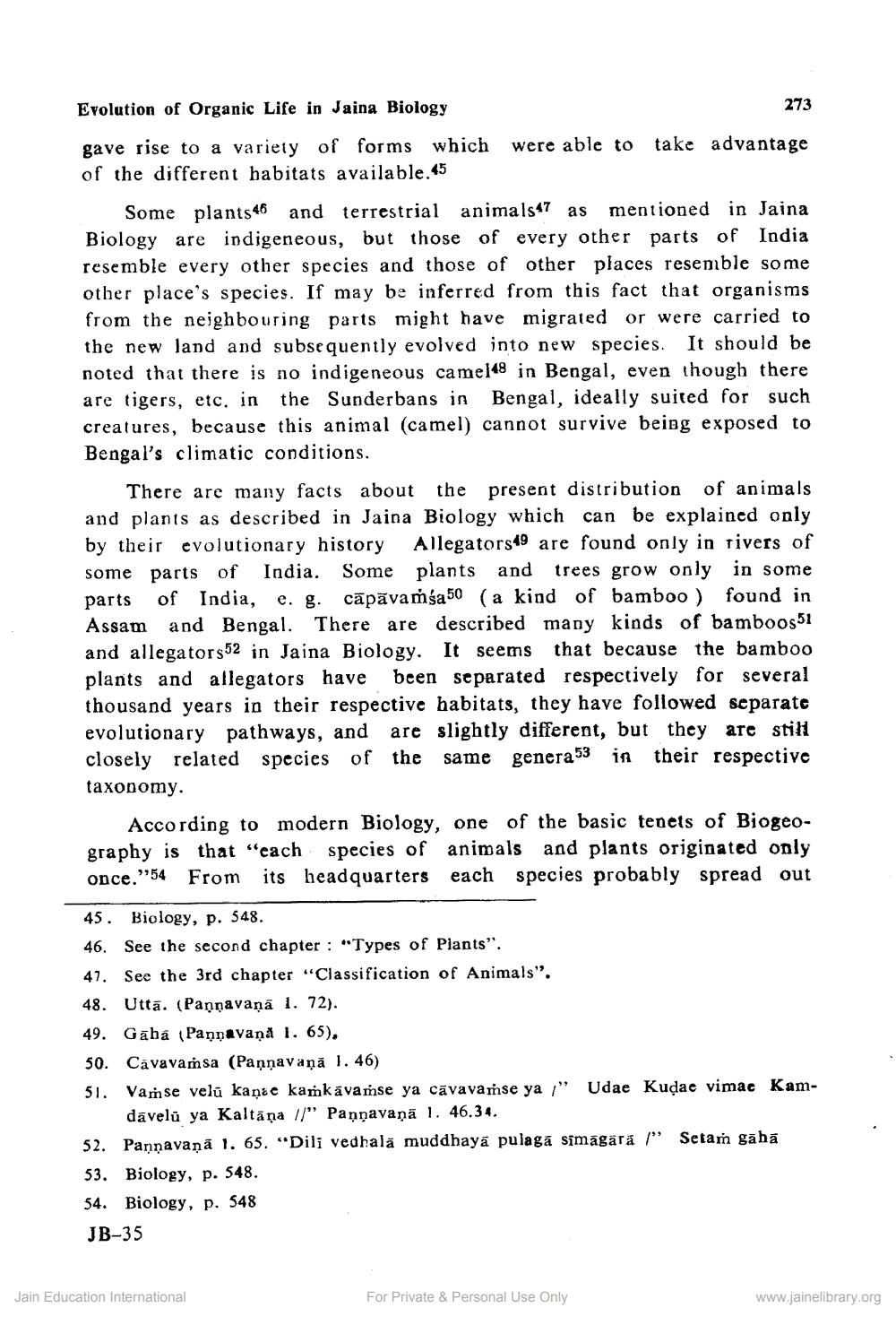________________
Evolution of Organic Life in Jaina Biology
273
gave rise to a variety of forms which were able to take advantage of the different habitats available.45
Some plants 46 and terrestrial animals47 as mentioned in Jaina Biology are indigeneous, but those of every other parts of India resemble every other species and those of other places resemble some other place's species. If may be inferred from this fact that organisms from the neighbouring parts might have migrated or were carried to the new land and subsequently evolved into new species. It should be noted that there is no indigeneous camel48 in Bengal, even though there are tigers, etc. in the Sunderbans in Bengal, ideally suited for such creatures, because this animal (camel) cannot survive being exposed to Bengal's climatic conditions.
There are many facts about the present distribution of animals and plants as described in Jaina Biology which can be explained only by their evolutionary history Allegators19 are found only in rivers of some parts of India. Some plants and trees grow only in some parts of India, e. g. căpăvaṁsa 50 (a kind of bamboo) found in Assam and Bengal. There are described many kinds of bamboos 31 and allegators52 in Jaina Biology. It seems that because the bamboo plants and allegators have been separated respectively for several thousand years in their respective habitats, they have followed separate evolutionary pathways, and are slightly different, but they are still closely related species of the same genera 53 in their respective taxonomy.
According to modern Biology, one of the basic tenets of Biogeography is that "cach species of animals and plants originated only once."54 From its headquarters each species probably spread out
plante originated only
45. Biology, p. 548. 46. See the second chapter : "Types of Plants". 47. See the 3rd chapter "Classification of Animals". 48. Uttā. (Paņņavaņā 1. 72). 49. Gābá (Pannavana 1. 65). 50. Cāvavaṁsa (Paņņavaņā 1. 46) 51. Vamse velú kaņae kamkávaṁse ya cāvavaṁse ya," Udae Kudae vimac Kam
dāvelú ya Kaltāņa 1/" Paņņavaņā 1. 46.34.
Pannavaņā 1. 65. "Dili vedhala muddhaya pulaga símāgara " Setar gāhā 53. Biology, p. 548. 54. Biology, p. 548 JB-35
52.
Jain Education International
For Private & Personal Use Only
www.jainelibrary.org




